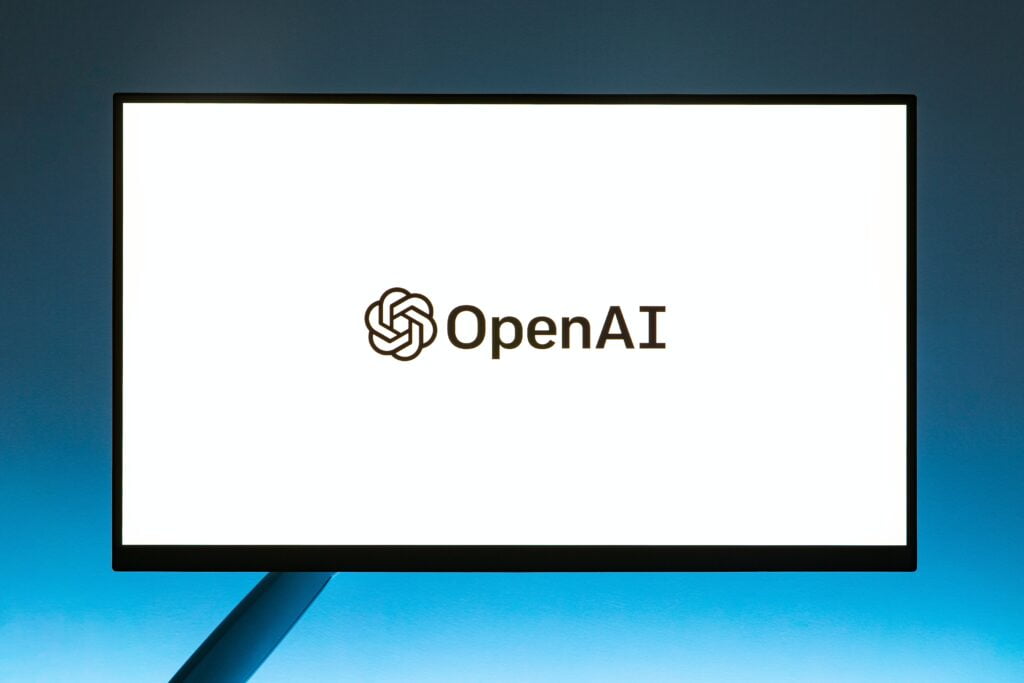
Microsoft researchers have made a groundbreaking discovery in the field of artificial intelligence (AI) with the latest version of OpenAI’s ChatGPT, known as GPT-4. The New York Times reports that GPT-4 exhibits remarkable signs of human-like reasoning and common sense. This development has significant implications for the future of AI and its potential to revolutionize various industries.
Signs of Human-Like Reasoning
In a comprehensive study conducted by Microsoft, GPT-4 demonstrated its ability to solve complex tasks across multiple domains, such as mathematics, vision, medicine, law, and psychology. This AI system exhibited a deep understanding of these fields without requiring specific prompts or guidance. Its proficiency in diverse subjects showcases the integration of knowledge and reasoning capabilities, reminiscent of human cognition. Microsoft’s findings suggest that GPT-4 can perform sophisticated tasks and offer insights into various professional disciplines.
Moreover, one remarkable example of GPT-4’s common sense reasoning involved the task of stacking objects. When given the items – a book, nine eggs, a laptop, a bottle, and a nail – GPT-4 arranged them in a manner that prevented the eggs from breaking. This intuitive decision-making reflects a substantial leap forward in AI capabilities, as GPT-4 considered the fragility of the eggs and adapted its strategy accordingly. Such nuanced reasoning signifies the AI’s ability to go beyond straightforward problem-solving and apply contextual understanding to real-world scenarios.
Common Sense Prevails
The AI community has long strived to develop systems that possess common sense reasoning, a crucial aspect of human intelligence. GPT-4’s ability to exhibit common sense is a remarkable achievement. Microsoft’s study demonstrates that GPT-4 showcases not only a breadth of knowledge but also a depth of understanding that allows it to draw accurate conclusions and make decisions based on common sense principles.
For instance, when given the task of stacking a book, nine eggs, a laptop, a bottle, and a nail, GPT-4 not only recognized the potential hazard of placing the eggs on top of the nail but also devised a safer arrangement to prevent the eggs from breaking. This level of common sense reasoning represents a significant stride towards AI systems that can navigate real-world scenarios with human-like judgment and intuition. The ability of GPT-4 to integrate context, conceptual understanding, and practical reasoning marks an exciting advancement in the field of artificial intelligence.
Towards Artificial General Intelligence (AGI)
The remarkable ability of GPT-4 to reason and employ common sense brings us closer to achieving artificial general intelligence (AGI). AGI refers to highly autonomous systems that outperform humans at most economically valuable work. GPT-4’s capacity to perform complex tasks across various domains without explicit programming or guidance represents a significant step towards AGI.
The implications of AGI are far-reaching, with the potential to revolutionize industries such as customer service and healthcare. Interesting Engineering highlights how the deployment of AGI can enhance efficiency, decision-making, and service quality in these sectors. As GPT-4 exhibits a level of reasoning and understanding akin to human intelligence, it opens up new possibilities for AI to contribute meaningfully to diverse fields. While AGI remains an ongoing pursuit, the progress made by GPT-4 signifies a promising advancement towards the development of increasingly general intelligent systems.
Acknowledging Limitations and Biases
While GPT-4 demonstrates remarkable capabilities, it is crucial to recognize that AI still has limitations and biases. Microsoft’s study emphasizes the need for caution when interacting with GPT-4 and similar AI systems. Responsible deployment and ongoing research are essential to address potential biases, ensure ethical use, and mitigate any unintended consequences.
As Down to Earth highlights, AI systems are not infallible and may exhibit biases learned from training data or face challenges in unfamiliar contexts. Therefore, it is important for users and developers to exercise critical thinking and take appropriate measures to prevent potential harm. Continuous evaluation and improvement are necessary to enhance the reliability, fairness, and transparency of AI systems as they evolve.
Microsoft’s GPT-4 Analysis
According to Microsoft’s analysis, while GPT-4 surpasses human-level performance in many tasks, its patterns of intelligence remain distinct from human-like cognition. GPT-4’s capabilities, although impressive, do not encompass the full range of human understanding and reasoning. However, the analysis suggests that GPT-4 represents a crucial initial step towards the development of increasingly general intelligent systems.
Through extensive testing, Microsoft observed that GPT-4 exhibited progressive improvement over time. This iterative approach to refining AI systems is a vital aspect of their development. GPT-4’s journey highlights the potential for future advancements in AI, propelling us further toward the goal of artificial general intelligence.
Conclusion: GPT-4
Microsoft’s discovery of human-like reasoning and common sense in GPT-4 signifies a significant advancement in the field of artificial intelligence. With its ability to solve complex tasks and exhibit common sense reasoning, GPT-4 showcases the integration of knowledge and contextual understanding, resembling human cognition. This development holds immense potential for diverse industries, promising to revolutionize sectors such as customer service and healthcare.
While celebrating these achievements, it is crucial to acknowledge the limitations and biases that AI systems may possess. Responsible deployment and ongoing research are essential to ensure the ethical and unbiased use of AI. Despite the existing challenges, GPT-4’s capabilities serve as a crucial milestone on the path towards artificial general intelligence. The continuous improvement observed in GPT-4 and its increasing resemblance to human-like reasoning provides a glimpse into the future possibilities of AI, sparking excitement for the transformative impact it can have on our society.
Also Read: AI Spotlight: Latest News and Developments in Artificial Intelligence